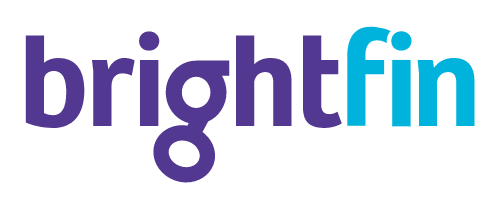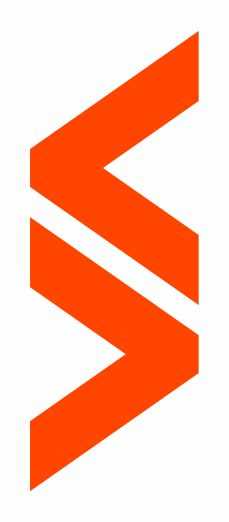Description

ExpensePoint

Xpenditure Expenses
Comprehensive Overview: ExpensePoint vs Xpenditure Expenses
ExpensePoint and Xpenditure (now part of the expense management platform Rydoo) are both financial software solutions designed to streamline expense management for businesses. Below is a comprehensive overview of each:
ExpensePoint
a) Primary Functions and Target Markets:
- Primary Functions: ExpensePoint is primarily designed to automate the process of tracking, submitting, and approving employee expenses. Its features include receipt capture via mobile devices, expense report creation, approvals workflow, policy enforcement, integration with accounting software, and analytics/reporting tools.
- Target Markets: ExpensePoint targets small to large enterprises across various industries seeking efficient and accurate expense management solutions. It serves businesses looking to streamline their expense processes while maintaining compliance and visibility.
b) Market Share and User Base:
- ExpensePoint has a strong presence in North America and caters to a global clientele. Its market share is significant in regions where its primary features and customer support have been well received. However, it's a competitive market with numerous players, so ExpensePoint holds a modest share compared to larger entities like Concur or Expensify.
c) Key Differentiating Factors:
- Simplicity and User-Friendliness: ExpensePoint is praised for an intuitive interface that facilitates straightforward expense management.
- Flexibility and Customization: Offers customizable workflows and report templates that can be tailored to specific corporate policies.
- Customer Support: Known for strong customer service and implementation support, which can be a deciding factor for businesses that value immediate assistance and onboarding help.
Xpenditure (Rydoo)
a) Primary Functions and Target Markets:
- Primary Functions: Xpenditure, now branded as part of Rydoo, provides tools for managing expense reports, handling travel expenses, and performing audits all from a single platform. Its automation is optimized to reduce administrative efforts through features like receipt scanning, a real-time policy checker, automatic mileage calculation, and integration with ERP systems.
- Target Markets: Rydoo targets a diverse range of companies from SMEs to large enterprises who are in need of a scalable solution to manage both travel and non-travel-related expenses. It is particularly popular among multinational companies needing consistent global application.
b) Market Share and User Base:
- As part of Rydoo, Xpenditure contributes to a broad international user base given Rydoo's extensive market activities across Europe, the Americas, and Asia-Pacific. It benefits from Sodexo’s backing in terms of credibility and deployment scale, allowing it to secure a considerable market share in the expense management space.
c) Key Differentiating Factors:
- End-to-End Solution: Rydoo (Xpenditure) offers an all-in-one platform where users can manage expenses and travel bookings simultaneously.
- Global Reach and Scalability: Rydoo’s infrastructure supports more than 180 countries, catering to multilingual and multi-currency transactions, making it suitable for global corporations.
- Mobile-First Approach: A strong focus on mobile expense management, providing high accessibility for employees constantly on the move.
Comparative Summary
- Functionality Overlap: Both tools focus on simplifying expense management and enforcing company policies through digitization and automation.
- Market Focus: While both cater to companies of all sizes, Rydoo (Xpenditure) generally targets larger, multinational enterprises due to its global reach and integrated travel solutions. ExpensePoint is often preferred by companies that prioritize user experience and customer support.
- Integration and Flexibility: ExpensePoint emphasizes flexibility and customization in workflows, while Rydoo excels in seamless global integration and comprehensive travel management.
- User Experience: Rydoo stands out with a robust mobile platform, while ExpensePoint tends to receive accolades for its customer service and ease of use.
Overall, companies choosing between these platforms should consider specific business requirements, especially in terms of global operations, travel management, and the level of customer support needed.
Contact Info

Year founded :
2000
+1 204-452-3614
Not Available
Canada
http://www.linkedin.com/company/expensepoint

Year founded :
Not Available
Not Available
Not Available
Not Available
Not Available
Feature Similarity Breakdown: ExpensePoint, Xpenditure Expenses
As of my knowledge cutoff date in October 2023, here's a general comparison of ExpensePoint and Xpenditure (now known as Rydoo) based on common features, user interfaces, and unique features. Note that product features and interfaces may have changed since then, so it's a good idea to check the latest from their official sources.
a) Core Features in Common
-
Expense Reporting:
- Both ExpensePoint and Rydoo offer comprehensive expense reporting tools that allow users to submit, track, and manage expenses efficiently.
-
Receipt Scanning:
- Both platforms provide receipt scanning functionalities. Users can take photos of receipts, which are then digitized and stored within the system.
-
Mobile App:
- Both have mobile applications available, providing users the flexibility to manage expenses on the go.
-
Integration:
- They both offer integration with accounting systems like QuickBooks, Xero, and others, streamlining financial data management.
-
Policy Compliance:
- Both solutions have features that support expense policy compliance, helping ensure that submissions adhere to company guidelines.
-
Multi-currency Handling:
- They both support multi-currency processing, which is essential for businesses with international operations.
b) User Interface Comparison
-
ExpensePoint:
- ExpensePoint typically offers a straightforward, user-friendly interface with a focus on simplicity and ease of navigation. Its interface is designed to facilitate quick entry and management of expenses through intuitive dashboard layouts and clear options.
-
Rydoo (formerly Xpenditure):
- Rydoo is known for its sleek, modern design. It emphasizes a minimalistic approach with an emphasis on user experience. Its mobile interface is particularly praised for its ease of use, allowing for swift receipt uploads and expense management.
c) Unique Features
-
ExpensePoint:
- Per Diem Management: ExpensePoint offers per diem calculation and tracking, which is beneficial for companies with frequent traveling employees.
- Custom Reporting: Provides robust custom reporting capabilities, allowing for tailored analytics and insights into expense data.
-
Rydoo (Xpenditure):
- Real-time OCR Technology: Rydoo is known for its powerful machine learning-based OCR (Optical Character Recognition) technology, which provides rapid and accurate extraction of data from receipts.
- Travel Booking Integration: Rydoo also integrates with travel management systems, combining travel booking and expense management seamlessly. This feature helps manage business trips from booking to expense tracking within a single platform.
- Advanced Approval Workflows: Offers highly customizable approval workflows suited to different organizational needs, supporting more complex hierarchies.
When evaluating these tools, potential users should consider their specific business needs, the level of detail required in reporting, and the user interface preferences of their employees. Additionally, reaching out for a demo or trial could provide more insights into how each tool can serve their requirements.
Features

Policy Compliance
User-Friendly Interface
International Support
Expense Management
Integration and Sync

Expense Management
Integration
Expense Tracking
Analytics and Reporting
Best Fit Use Cases: ExpensePoint, Xpenditure Expenses
When analyzing the use cases for ExpensePoint and Xpenditure Expenses, it's important to consider their unique features, target audiences, and potential benefits for different business types or projects. Here's a breakdown that addresses these points:
a) For what types of businesses or projects is ExpensePoint the best choice?
ExpensePoint is well-suited for:
-
Medium to Large Enterprises:
- Global Operations: With multi-currency and multilingual support, ExpensePoint is ideal for companies with international operations.
- High Volume of Expenses: Companies with a large number of employees who frequently incur expenses can benefit from its robust tracking and reporting features.
-
Industries with Complex Expense Policies:
- Consulting and Professional Services: Industries that have intricate billing and client reimbursement needs might find ExpensePoint's extensive policy compliance features advantageous.
- Healthcare and Pharmaceuticals: Regulated industries requiring detailed audit trails will appreciate the software’s comprehensive reporting and auditing capabilities.
-
Projects with Detailed Budgeting Needs:
- Projects that require meticulous expense tracking and reporting can utilize ExpensePoint’s strong analytical tools to keep projects within budget.
b) In what scenarios would Xpenditure Expenses be the preferred option?
Xpenditure Expenses (now part of Rydoo) is particularly beneficial for:
-
Small to Medium-Sized Enterprises (SMEs):
- Cost-Conscious Businesses: Its pricing structure can be more favorable for smaller businesses looking to manage expenses without extensive overhead.
- Rapid Growth Companies: Companies in expansion phases that need scalable expense solutions with easy onboarding and user-friendly interfaces.
-
Startups and Tech-Savvy Businesses:
- Integration Needs: Technology-forward companies looking for seamless integration with other SaaS solutions, like accounting software, will find Xpenditure’s API integrations handy.
-
Mobile or Remote Workforces:
- Field-Based Employees: Businesses with employees constantly on the move can leverage Xpenditure's strong mobile application for quick and efficient expense submissions.
d) How do these products cater to different industry verticals or company sizes?
ExpensePoint:
- Industry Vertical Adaptability: It offers customizable features suited for diverse industries requiring specific compliance and reporting structures. Its adaptability to complex industry needs makes it a good choice for sectors like finance, healthcare, and legal.
- Enterprise-Level Support: Catered more towards larger enterprises, offering features that support expansive operational needs, such as global currency management and advanced reporting.
Xpenditure Expenses:
- Versatile for Various Industries: While it serves general business needs effectively, it's particularly appealing to industries with high mobility and less complex expense management requirements.
- SME Focused Offerings: With intuitive setup and operation, it is ideal for smaller companies and startups, or those in less regulated industries looking for efficiency and ease of use in expense management.
Both ExpensePoint and Xpenditure (Rydoo) address the core needs of different business environments, allowing organizations to choose based on scale, industry requirements, and specific operational complexities.
Pricing

Pricing Not Available

Pricing Not Available
Metrics History
Metrics History
Comparing teamSize across companies
Conclusion & Final Verdict: ExpensePoint vs Xpenditure Expenses
Conclusion and Final Verdict on ExpensePoint vs. Xpenditure Expenses
When evaluating ExpensePoint and Xpenditure Expenses, it's essential to assess their features, pricing, user experience, integrations, customer support, and the specific needs of a business or user.
a) Best Overall Value
Considering all factors, ExpensePoint generally offers the best overall value, particularly for medium to large businesses seeking comprehensive features and excellent customer support. It provides robust reporting, a generous array of features, and good scalability options at competitive pricing.
b) Pros and Cons
ExpensePoint:
Pros:
- Comprehensive Features: Offers extensive features, including receipt imaging, automated approval workflows, and detailed reporting.
- Scalability: Suitable for small to large businesses, providing flexible scaling options.
- Excellent Customer Support: Known for responsive and helpful customer service.
- User-friendly Interface: Easy-to-navigate interface simplifies training and adoption for users.
Cons:
- Learning Curve: Due to the multitude of features, there may be a higher initial learning curve for new users.
- Customization: Limited customization options compared to some competitors, which might not fit businesses with unique requirements.
Xpenditure Expenses:
Pros:
- Ease of Use: Highly intuitive and user-friendly interface, making it ideal for small businesses or individual users.
- Integration Capabilities: Strong integration capabilities with various accounting software and platforms.
- Mobile Usability: Excellent mobile app usability for capturing and submitting expenses on the go.
Cons:
- Feature Set: May lack certain advanced features that larger businesses might need, such as extensive reporting tools.
- Scalability: Better suited for small to medium-sized businesses, with potential limitations as an organization grows.
- Pricing Structure: Pricing can become less competitive as the number of users increases.
c) Recommendations for Users
-
For Small Businesses or Individual Users: Xpenditure Expenses is a compelling choice thanks to its ease of use, strong mobile functionality, and seamless integration capabilities. It simplifies expense management and is especially attractive for users prioritizing quick setup and mobility.
-
For Medium to Large Businesses: ExpensePoint is recommended for its comprehensive feature set, robust reporting, and scalability. It excels in environments where detailed tracking and analysis of expenses are critical.
-
For Businesses Considering Future Growth: ExpensePoint might provide more long-term value due to its scalable nature and extensive customer support, which can accommodate increasing complexity and user numbers over time.
In conclusion, the choice between ExpensePoint and Xpenditure Expenses should be determined by the specific needs and size of your organization, as well as the importance of features beyond ease of use, such as reporting and support scalability. Both offer unique strengths, making them viable options for different business types and sizes.
Add to compare
Add similar companies



